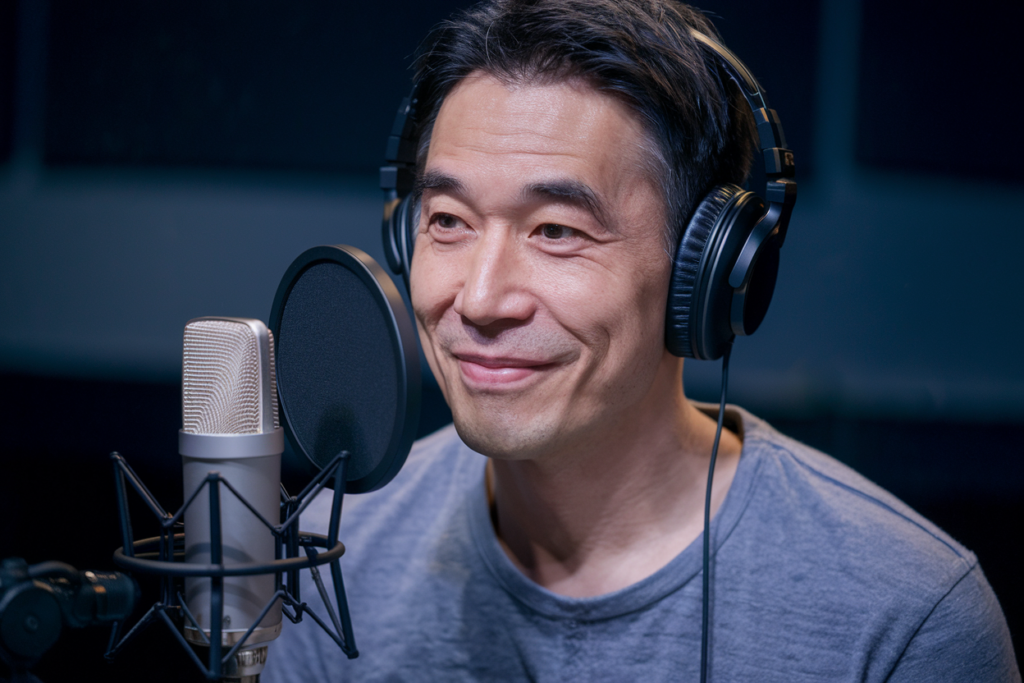Key Takeaways
- Cultural nuances and sensitivity are crucial in Japanese voiceover localization; understanding social norms and expressions enhances authenticity.
- Language complexity, including multiple scripts and differing sentence structures, poses challenges that require skilled voice actors for effective delivery.
- Technical limitations, such as audio quality variations between studios, can impact the clarity of performances; collaboration among production teams is vital.
- Meeting viewer expectations through relatable and authentic voiceovers fosters a deeper emotional connection with the audience.
- Emotional resonance is essential for storytelling; skilled voice actors must convey not just words but also feelings to engage viewers meaningfully.
- Implementing adaptation strategies and collaborating with native speakers significantly improves localization quality while preserving cultural integrity.
Ever wondered why some Japanese voiceovers just don’t hit the mark? You’re not alone. The world of Japanese voiceover localization is riddled with challenges that can leave audiences feeling disconnected from the content. From cultural nuances to technical limitations, these problems can turn a captivating story into a confusing experience.
Overview of Japanese Voiceover Localization
Japanese voiceover localization presents unique challenges that can affect how well your project connects with its audience. This process involves more than just translating text; it requires a deep understanding of cultural nuances, context, and the emotional weight behind words.
When selecting voice artists for your project, consider their ability to convey emotions authentically. A skilled voice actor knows how to adapt their delivery to match the tone and intent of the original content. If they lack this understanding, the final product may come off as flat or disjointed.
Technical limitations also play a significant role in localization issues. For instance, differences in audio equipment quality or recording environments can impact sound clarity. It’s crucial to ensure that voice over talent has access to professional-grade tools and studios that enhance performance rather than hinder it.
Moreover, pacing is another factor worth noting. Japanese dialogue often features different rhythms compared to English or other languages. When adapting scripts for voiceovers, maintaining natural flow becomes essential for listener engagement.
Ultimately, successful localization relies on collaboration between translators and voice over actors who both appreciate the intricacies of language and culture. Engaging professionals who grasp these elements fosters an authentic experience that resonates with audiences while honoring the source material’s integrity.
Common Challenges in Japanese Voiceover Localization
Japanese voiceover localization presents several challenges that can impact the final product’s quality and effectiveness. Understanding these hurdles is essential for achieving an authentic and engaging experience.
Cultural Nuances and Sensitivity
Cultural nuances play a vital role in voiceovers. Japan’s unique social norms, humor, and expressions often require careful consideration during localization. A phrase that sounds natural in English may not translate effectively into Japanese due to differing cultural contexts. For example, honorifics are crucial in Japanese language interactions; neglecting them can lead to misunderstandings or perceived disrespect. Thus, selecting a skilled voice artist who understands these subtleties enhances the authenticity of the final product.
Language Complexity
Language complexity adds another layer of difficulty. Japanese features multiple scripts—hiragana, katakana, and kanji—which can complicate translation efforts. Additionally, sentence structures differ significantly from English, affecting pacing and rhythm when recording voiceovers. The challenge lies in ensuring that the translated script maintains its intended meaning while fitting naturally within the flow of spoken dialogue. Engaging a proficient voice actor who can navigate these intricacies ensures clarity and emotional resonance with listeners.
Technical Limitations
Technical limitations also influence Japanese voiceover projects. Differences in audio equipment between studios might affect sound quality or clarity during recordings. Furthermore, varying acoustics can alter how voices project emotions or intentions behind lines delivered by talented voice actors. To mitigate these issues, collaboration among translators, directors, and sound engineers becomes crucial to maintain high standards throughout production.
Navigating these common challenges requires expertise at every stage—from translation to casting talent skilled in delivering nuanced performances that resonate with audiences while preserving cultural integrity.
Impact on Audience Reception
The success of Japanese voiceover localization hinges on how well it resonates with the audience. When cultural nuances and emotional depth are accurately represented, viewers connect more profoundly with the content.
Viewer Expectations
Viewer expectations play a significant role in reception. Audiences expect authenticity and relatability from voiceovers. They look for voice artists who can capture the essence of characters, bringing them to life through their performance. If a voiceover fails to meet these expectations—whether due to poor translation or lackluster delivery—the result can be disappointment and disengagement. Ensuring that the voice talent understands cultural references helps bridge this gap, allowing for an immersive experience that aligns with what viewers anticipate.
Emotional Resonance
Emotional resonance is critical in effective storytelling. A skilled voice actor must convey not just words but feelings, capturing the subtleties of emotion inherent in Japanese dialogue. When a voice over artist connects emotionally with the material, it enhances viewer engagement and satisfaction. Conversely, if emotional nuance gets lost during localization—due to misinterpretation or uninspired delivery—it can lead to confusion rather than connection. The right combination of language expertise and vocal expression ensures that audiences feel the intended emotions, making their experience more impactful and memorable.
By addressing these key aspects—viewer expectations and emotional resonance—you create a localized product that speaks directly to your audience’s hearts while respecting the original intent of the source material.
Solutions and Best Practices
Addressing localization challenges in Japanese voiceovers involves strategic approaches that enhance audience engagement. Implementing effective solutions ensures the final product resonates well with viewers.
Adaptation Strategies
Adaptation strategies play a vital role in overcoming cultural nuances and language complexities. Focus on these key elements:
- Contextual Translation: Ensure translations capture the intended meaning, not just literal words. This approach maintains emotional depth.
- Cultural References: Identify and adapt culturally specific references to make them relatable for your audience. Substituting local idioms or examples can foster a stronger connection.
- Pacing Adjustments: Modify pacing during recordings to match the natural flow of Japanese speech patterns. This adjustment enhances clarity and listener engagement.
- Voice Style Matching: Select voice actors whose delivery aligns with the character’s personality and tone, ensuring authenticity shines through.
Collaboration with Native Speakers
Collaboration with native speakers elevates the quality of your localized content significantly. Involve skilled individuals who understand both languages fluently. Here are some benefits:
- Cultural Insights: Native speakers provide valuable insights into social norms and expressions, preventing potential misunderstandings.
- Emotional Authenticity: Engaging native voice talent guarantees emotional resonance as they grasp nuanced feelings tied to specific phrases or scenarios.
- Feedback Loop: Establish an ongoing dialogue between translators, voice artists, and sound engineers to refine performances continuously based on real-time feedback.
By implementing adaptation strategies and collaborating closely with native speakers, you enhance your Japanese voiceover projects’ effectiveness while ensuring cultural integrity remains intact throughout the process.
Conclusion
Navigating the complexities of Japanese voiceover localization is essential for achieving authentic and engaging content. By prioritizing cultural sensitivity and emotional depth, you can create a connection with your audience that transcends language barriers. Understanding the intricacies of the Japanese language and its unique nuances plays a crucial role in delivering a polished final product.
Collaborative efforts among translators, voice actors, and sound engineers are vital to overcoming challenges in this process. Implementing best practices ensures that your localized projects resonate emotionally while maintaining fidelity to the original material. When you focus on these elements, you’re not just translating words; you’re crafting an experience that captivates viewers and honors the storytelling tradition inherent in Japanese media.
Frequently Asked Questions
What are the main challenges in Japanese voiceover localization?
Japanese voiceover localization faces challenges such as cultural nuances, technical limitations, and the complexity of the language. Understanding social norms and emotional depth is crucial to resonate with audiences. Poor translation or lackluster delivery can lead to confusion and disengagement.
Why is cultural sensitivity important in voiceover work?
Cultural sensitivity ensures that unique social norms and expressions from Japan are respected. This consideration helps avoid misunderstandings, making the content relatable and engaging for the audience while preserving its authenticity.
How does language complexity affect Japanese voiceovers?
The Japanese language features multiple scripts and distinct sentence structures, which complicate translation. These factors can influence pacing during recordings, impacting how emotions are conveyed and ultimately affecting viewer engagement.
What role do voice actors play in localization success?
Skilled voice actors are essential for effectively conveying emotions beyond just words. Their ability to connect with character personalities enhances storytelling, making it more relatable and engaging for viewers.
How can collaboration improve Japanese voiceover projects?
Collaboration among translators, voice actors, and sound engineers fosters a deeper understanding of linguistic intricacies and cultural context. This teamwork leads to higher-quality localization that maintains emotional resonance while respecting the original material’s intent.







